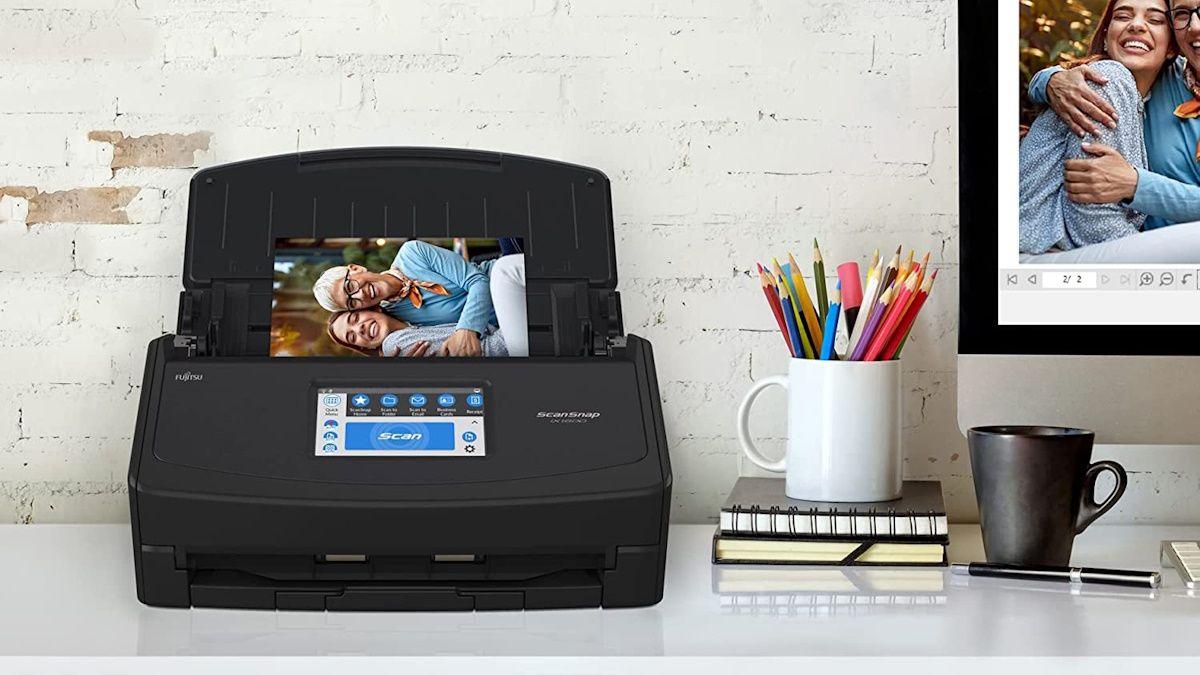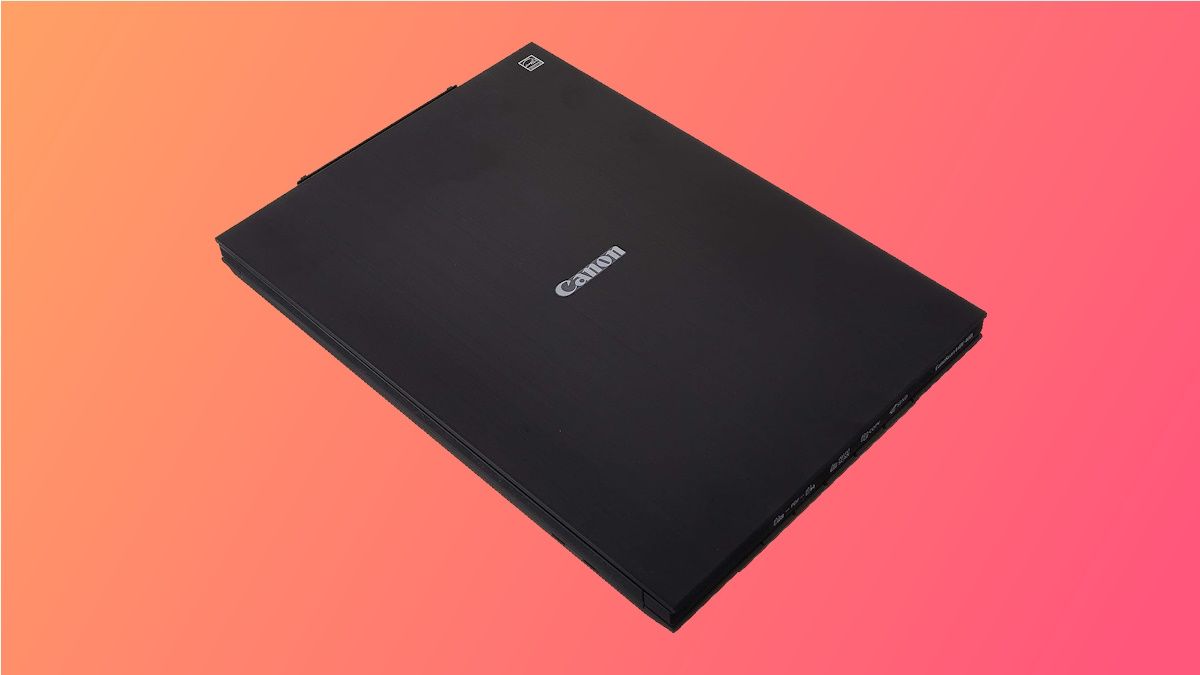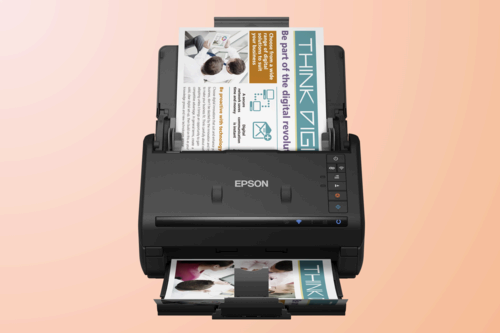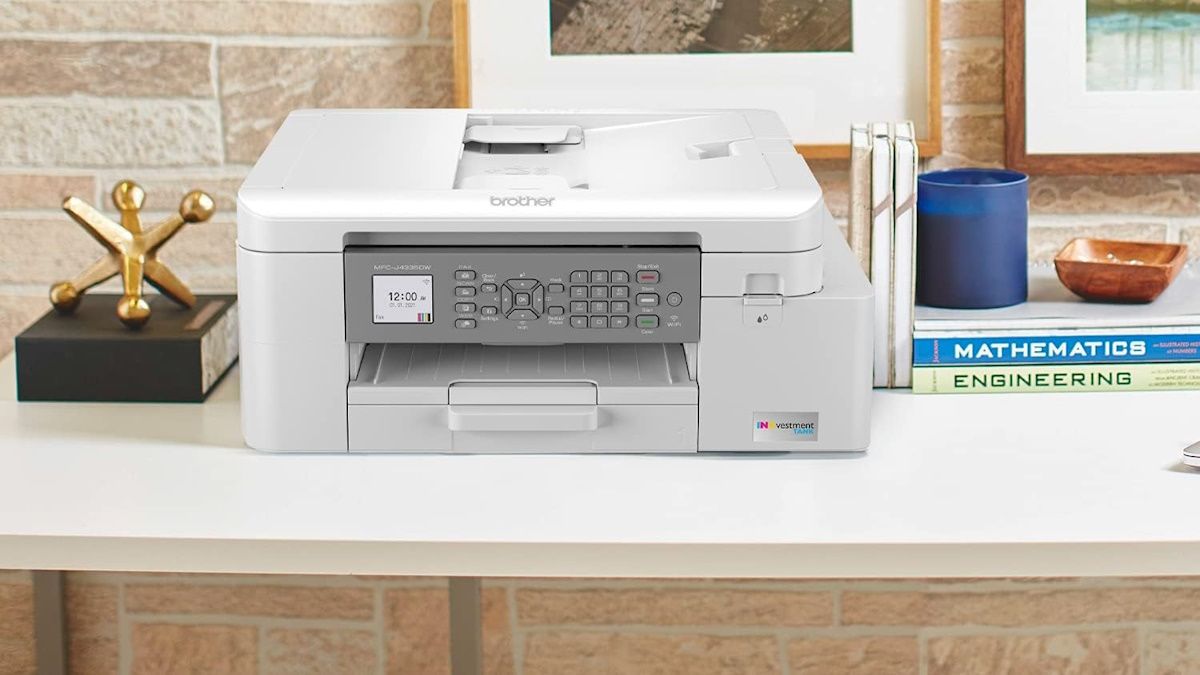Scanners can transform your physical documents, photos, and artwork into digital files that you can store, edit, share, and print. But not all scanners are created equal—make sure to get the right one for your needs.
UPDATE: 03/12/2024
We’ve updated our buying guide with a new pick for the best scanner for offices.
What to Look For in a Scanner in 2024
A scanner purchase can seem daunting, given the number of options on the market. But you can cut through the clutter by looking for features matching your needs.
First and foremost, you’ll have to decide on the type of scanner from flatbed, sheet-fed, portable, all-in-one, and more. Each has its advantages and disadvantages.
For example, flatbed scanners are more than enough for occasional scans at home, but they aren’t very fast. Similarly, sheet-fed scanners are great for scanning many documents quickly, but some can damage fragile documents. On the other hand, as the name suggests, portable scanners are suitable for on-the-go scanning but don’t usually have the best quality or performance.
Besides the type of scanner, you’ll have to focus on the performance and quality of a scanner—typically impacted by the resolution, color depth, and connectivity options. The higher the scanner’s resolution, the more detail and clarity you will get in your scans. But high-resolution scans also take up space on your hard drive and take time to process. 300 dpi resolution is typically more than enough for home use, but you will need 1200 dpi for professional-grade prints.
Color or bit depth reveals the amount of color information a scanner can gather from a photo. Higher color depth is better, but unless you are a professional who needs the highest quality, you don’t need more than a 24-bit color depth, which many modern scanners have.
Connectivity options can also be important for some people unless you plan to connect your scanner to one fixed computer and scan using that. Modern scanners can connect using USB, Ethernet, and Wi-Fi—which is best for you will vary depending on your setup and available ports.
|
How Did We Research |
||
|
Models Evaluated |
Hours Researched |
Reviews Analyzed |
|
23 |
9 |
25 |
How-To Geek’s product recommendations come from the same team of experts that have helped people fix their gadgets over one billion times. We only recommend the best products based on our research and expertise. We never accept payment to endorse or review a product.
Read More »
|
Pros |
Cons |
|---|---|
|
✓ Fast and easy to use |
✗ Expensive |
|
✓ Built-in automatic document feeder |
✗ No Ethernet support |
|
✓ Excellent bundled software |
|
|
✓ Multiple connectivity options |
The Ricoh ScanSnap lineup (previously known as Fujitsu ScanSnap) is widely loved for its impressive performance and long life. And the iX1600, the current flagship model in the lineup, is no exception. It’s an excellent scanner for your home or office, particularly if you often have to scan documents, receipts, business cards, and photos. It’s fast and produces clean and clear scans.
In other features, you get a 50-sheet single-pass automatic document feeder (ADF) and the ability to connect the scanner via USB or Wi-Fi. It can also scan both sides of the paper in a single pass.
Moreover, the company’s ScanSnap and ScanSnap Home companion software are easy to use, and the scanner itself features a touchscreen with plenty of options to get your work done.
Another helpful feature of the iX1600 is the built-in support for profiles. You can save up to four profiles, each with its scanned document destination. So one profile can send the scans to the computer, whereas the other can have scans delivered to their email or cloud folder.
The only downside is its price tag. Unless you plan to scan many documents frequently, it’ll be an expensive purchase, and you’ll be better off with our budget pick.
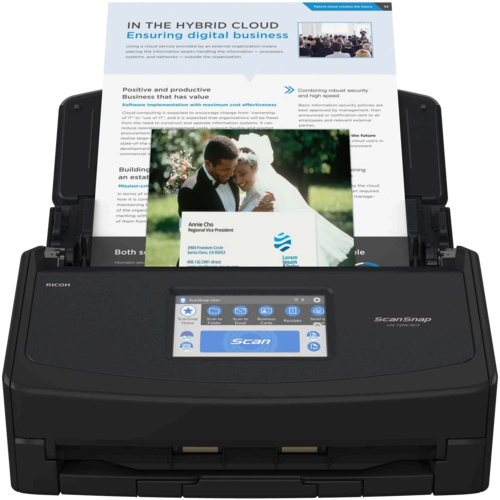
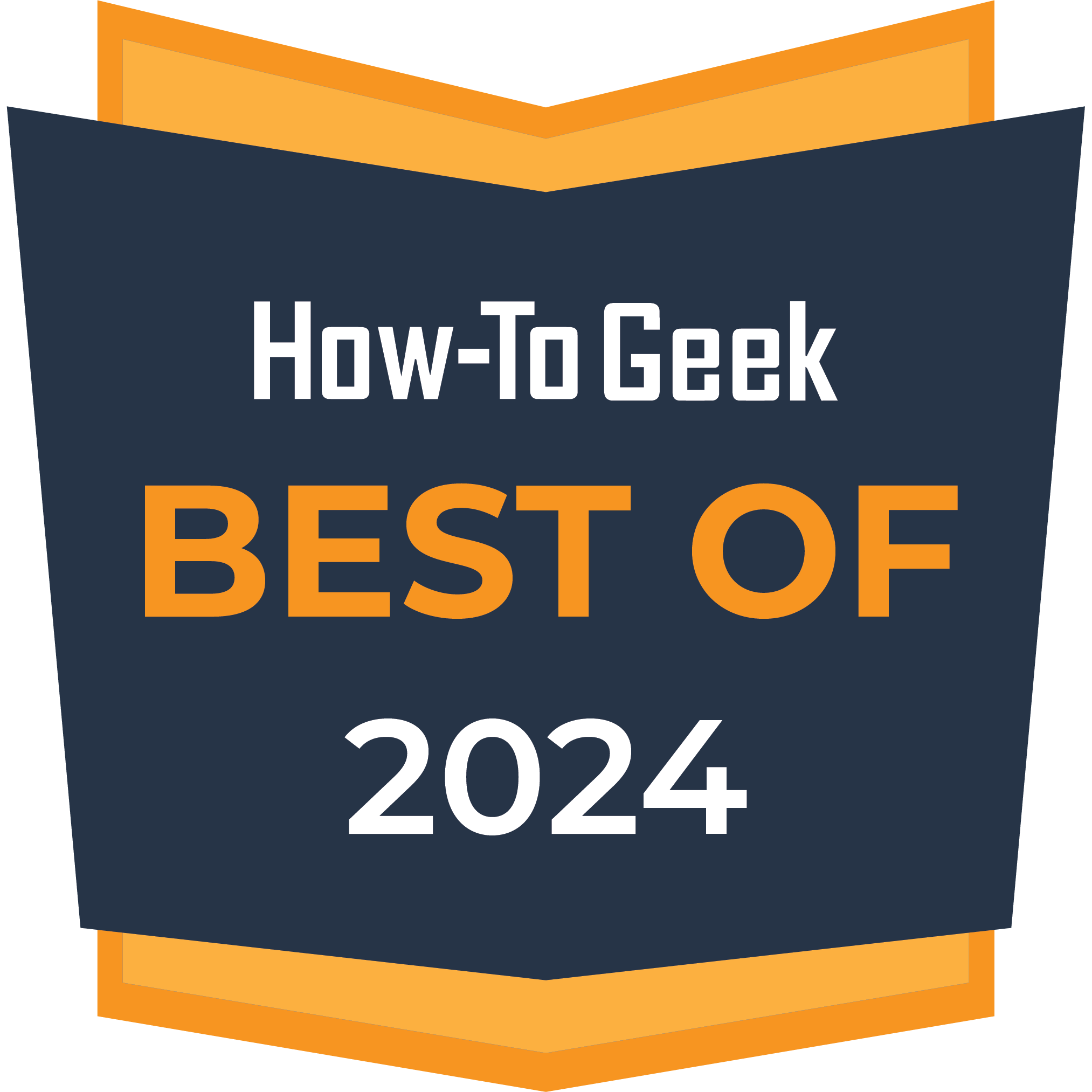
Ricoh ScanSnap iX1600
Best Scanner Overall
$400 $554 Save $154
Scan quickly and precisely with Ricoh’s ScanSnap iX1600. It has an ADF, a built-in touchscreen, and multiple-profile support.
|
Pros |
Cons |
|---|---|
|
✓ Easy to use |
✗ No wireless or Ethernet support |
|
✓ Vibrant and accurate scans |
|
|
✓ Bundled pedestal for upright positioning |
If you don’t want to spend too much on a scanner purchase or need something for occasional scans, the Canon CanoScan Lide 400 is a solid option. It can capture photos and documents at a high resolution of 4800 dpi and is reasonably quick at scanning. Of course, you won’t get the speed of an automatic document feeder, as it’s a flatbed scanner and you have to swap out the documents manually.
The scan quality is good, and the colors look accurate and vibrant. Plus, the bundled software is relatively easy-to-use, and you get five buttons on the scanner for a quick scan.
While the Lide 400 doesn’t take up much desk space, the company bundles a kickstand-like pedestal for upright positioning to reduce its footprint even further when you aren’t using it.
The Canon scanner is barebones in terms of connectivity options. It can only connect to one computer at a time, and it does so via USB. There is no wireless connectivity or Ethernet support, but that shouldn’t be a problem for home users.
In short, the Canon CanoScan Lide 400 is excellent for basic document and photo scanning. If you only need to scan photos or documents occasionally, you can’t go wrong with this purchase.
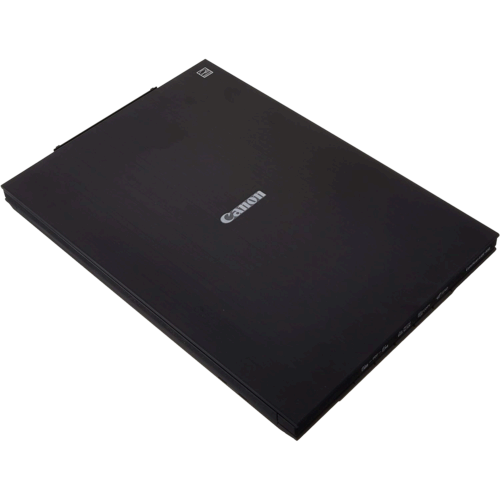

Canon CanoScan Lide 400
Best Budget Scanner
$81 $90 Save $9
The affordable Canon CanoScan Lide 400 shines as a no-frills flatbed scanner. It scans reasonably fast, has a touchscreen, and supports USB Type-C.
|
Pros |
Cons |
|---|---|
|
✓ Fast photo scans |
✗ Somewhat expensive |
|
✓ Excellent companion software |
|
|
✓ Built-in automatic document feeder |
Have stacks of photos to digitize? Then, Epson’s FastFoto FF-680W is your friend. It can accept batches of up to 35 photos in one go and supports dual-sided scanning in one pass. 300 DPI scans take about a second, and while 600 DPI takes longer, it’s still very fast. Plus, the automatic photo feeder keeps your images safe.
The Epson scanner also supports wireless connectivity, so you can use a USB cable or go completely wireless.
In other highlights, the FastFoto software is excellent and allows you to organize the scans and apply automatic image tweaks like red-eye correction during the scanning process. It can also improve colors, crop, or rotate pictures if needed. You’ll also be happy to know that it keeps both original scans and their enhanced versions, so you can choose whichever you prefer.
Beyond its photo-scanning prowess, the scanner is pretty good for documents. So once you are done digitizing your printed photo collection, it’ll remain useful.
However, the Epson scanner can be an expensive investment for most home users, particularly if you only have a fixed bunch of photos and aren’t planning to scan too much in the future. In that case, our budget recommendation will be more suitable.
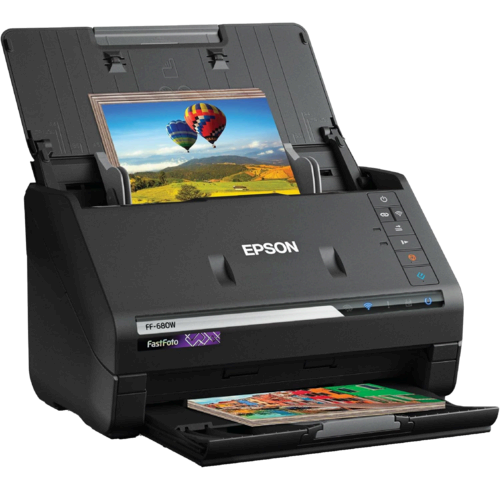

Epson FastFoto FF-680W
Best Photograph Scanner
$500 $600 Save $100
Digitize your photo prints with Epson’s FastFoto FF-680W, which can scan up to 35 photos in 35 seconds. It also has auto enhancement, cloud services, and OCR software.
|
Pros |
Cons |
|---|---|
|
✓ Single-pass duplex color scanning |
✗ No LED touchscreen |
|
✓ Send Scans to multiple devices and locations |
|
|
✓ 50-sheet automatic feed tray |
|
|
✓ Small desktop footprint to save space |
The Epson Workforce ES-500W II is a brilliant choice if your small or home business regularly requires more than a handful of documents to be scanned. It isn’t the cheapest scanner you can find, but it will let you digitize large quantities of documents quickly, easily, and at a fraction of the long-term cost of using a scanning service.
The ES-500W II color scanner is primarily designed to be used wirelessly, but it can also be wired to a desktop or laptop computer via USB 3.0. Wireless connectivity allows for a wider range of scan destinations, including phones, tablets, Mac and Windows computers, and various cloud storage services. On top of that, the included TWAIN driver means it’s also compatible with most third-party document management software.
Scan quality tops out at 600 DPI, but can be adjusted by degrees down to 300 DPI if the highest resolution isn’t required. When running at the maximum speed, it can handle 35ppm or 70ipm when scanning double-sided documents in duplex mode. The ppm count will undoubtedly be lower if it’s running at 600 DPI, but it’s still a decent max scan rate.
The footprint is relatively small thanks to the vertical feed design. With the bottom tray folded away, the whole thing will fit into a 7×12-inch bit of desk space, so it’s unlikely to get in the way too much when not in use. And that vertical feed tray can hold up to 50 pages, so you don’t need to constantly feed the machine fresh docs.
The one potential downside is that there’s no LED touchscreen on the scanner, but the ScanSmart software for Mac and Windows and the Smart Panel app for smartphones are easy to use and offer plenty of ways to manage scans.
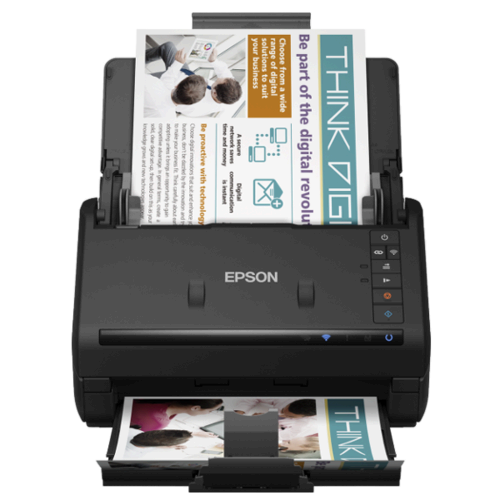

Epson Workforce ES-500W II
Best Scanner for Offices
$320 $390 Save $70
The Epson Workforce ES-500W II is an excellent scanning solution for small or home businesses. Offering a 50-sheet feed tray, full-color duplex scanning, wireless connectivity with smartphones, tablets, computers, and cloud storage, and excellent scanning software, this machine will let you easily digitize multiple documents.
|
Pros |
Cons |
|---|---|
|
✓ Good overall performance |
✗ Tiny display |
|
✓ Low running cost |
✗ Prints are reasonable but not very high-quality |
|
✓ Built-in ADF |
If your printing and scanning requirements are infrequent, but you prefer to be ready, an all-in-one printer is a good option. The Brother MFC-J4335DW is an all-in-one (AIO) that is perfect for regular home use. It combines the functionality of an ink-jet printer with a flatbed scanner that comes with an automatic document feeder. The device can also function as a fax machine if you need it.
This AIO has a relatively compact size and will fit perfectly on your desk. You can connect the Brother AIO to a single computer or network, depending on your needs. Plus, the built quality is good, and it feels sturdy.
Printing and scanning speeds are reasonable, with output quality acceptable for casual use, whether for a home or a small office. But don’t expect both scans and prints to be perfect or very high-quality.
Another advantage of going with the Brother offering is its low-running cost. According to Brother’s estimates, the bundled cartridges will let you print around 1000 pages using black ink or over 700 using color.
The Brother MFC-J4335DW is also reasonably priced and performs better than most competitors. But the photo scans could be better, and the built-in screen is tiny and not touch-enabled.
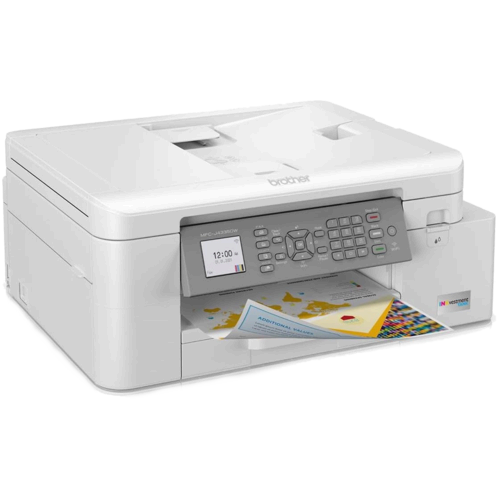

Brother MFC-J4335DW
Best Printer Scanner Combo
$160 $180 Save $20
The versatile Brother MFC-J4335DW is a solid option for basic printing and scanning needs. It’s also compact and well-built.
